Revcontent is one of the top native advertising networks you can use to scale. But what is scaling? Scaling is taking high performing campaigns and extending reach within the same channel.
As an advertiser, you might start with one campaign for one article and have a very broad targeting. But after collecting data from the campaign you may realize a specific country or device is performing better or worse than the other. This makes having a huge target range less valuable, and want to dig deeper and target the areas performing well to optimize ROI, CPI, or any other KPIs.
Let's say you have three landing pages to advertise. Each of those pages will need two campaigns (one for desktop and one for mobile). So now you're dealing with six campaigns (3 pages x 2 devices). Now you also want to target specific Geos like the United States, United Kingdom, Australia, and Canada. That becomes 24 campaigns (3 pages x 2 devices x 4 countries). In each campaign, you'll have 10-15 ads which come out to 240 to 360 ads you need to create. If you've ever had to create 360 ads before, you know the pain of scaling.
Once you start scaling and having hundreds of campaigns and thousands of ads running, it becomes difficult to track and sort through all that data. We've seen MILLIONS of ads, spoke with dozens of our customers and are giving you the benefit of learning ahead of time how to scale properly on Revcontent.
Use Campaign Naming Conventions
The best way to track, analyze, and optimize campaigns is by having a system in place that includes utilizing a campaign naming convention. Doing so will allow you to view and optimize campaigns on a single page in Brax. This is where you can inline edit and adjust CPCs to ensure you are capitalizing on the best ROI.
Within the campaign naming convention, it is ideal to list the campaign’s device (Desktop, Tablet, Mobile), Geo-targeting, or even the person who created the campaign; differentiating campaigns without having to go into the campaign details. A good example of a naming convention for campaigns would be:
source-website-device-geo-creator-campaign name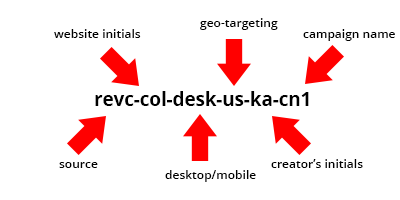
If there is a high performing campaign, you may want to duplicate it on Revcontent. Recreate the campaign into two new campaigns. In one of the campaigns use the image that was performing well, with new headlines. In the second campaign, re-use the headline that was working well, but with new images.
Brax allows you create campaigns quickly and sort through all campaigns without having to organize spreadsheets.
1. Create the initial campaign with the set CPC, Budget, Targeting Type.
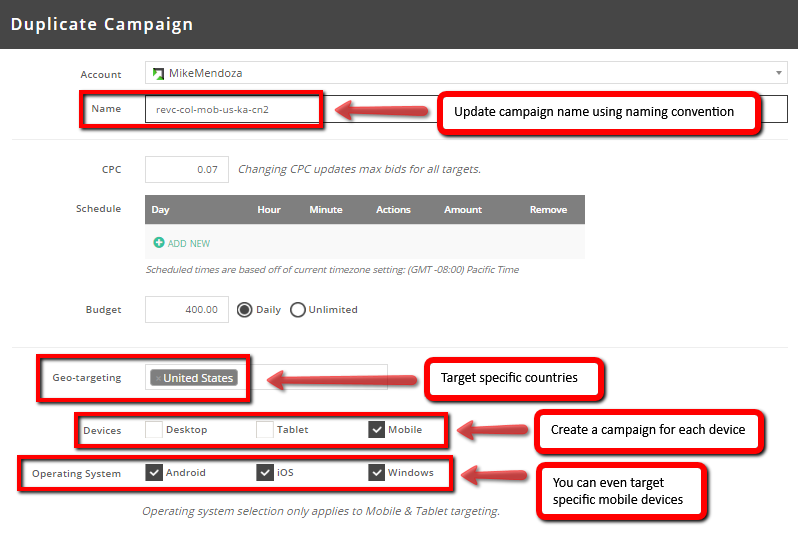
2. Then click on the Edit button for the campaign to duplicate.
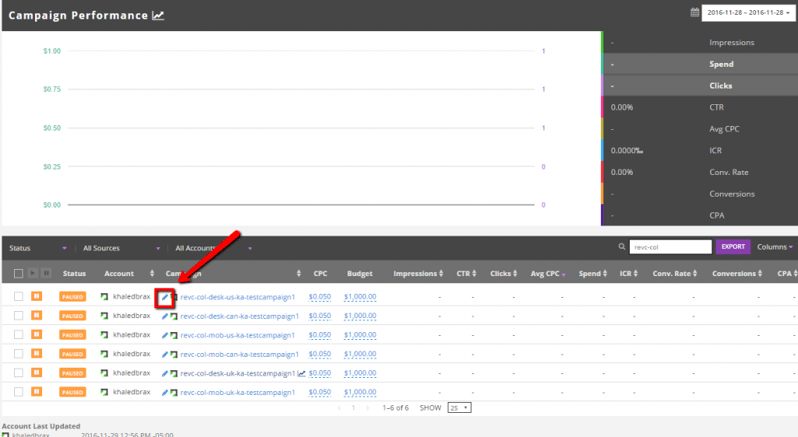
3. Click on the Duplicate button in the top right corner of the screen.
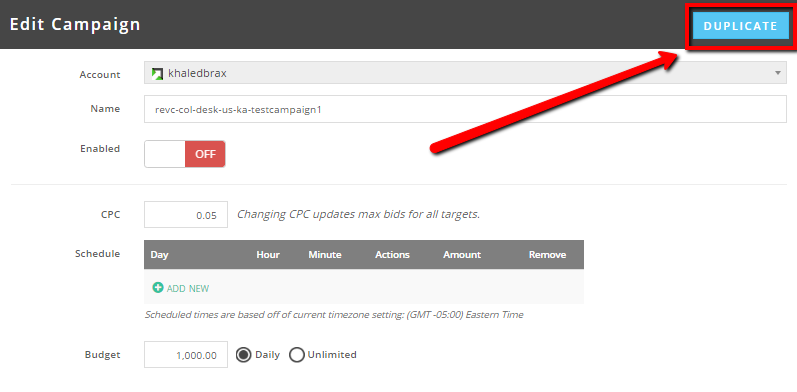
4. Change the name of the campaign using the naming conventions and make a set for Desktop, Tablet, and Mobile.
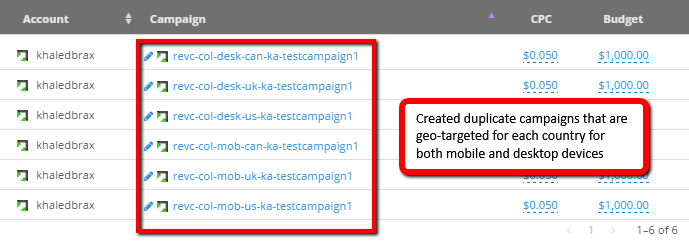
You can go even deeper and target the operating system for mobile devices. Once you have a campaign specific for devices, geo-targeting, and specific mobile devices you're ready to create the ads for each campaign.
Setting Target for Campaigns
Revcontent is one of the few native advertising networks which allows targeting people based on topic, interest, or brand.
Topic
Revcontent categorizes what kind of site each publisher is- i.e. Political, Celebrity, Health, Sports, or News. This is especially useful if you're trying to sell Republican bumper stickers, you wouldn't want to have ads showing up on a Food website because their mindset isn't interested in politics. You can even blacklist or whitelist publishers that don't perform well for campaigns.
Whitelist is a list of publishers you want ads to appear on and nowhere else. Advertisers use whitelists to target their ads at the right audience. If you know what topics they're interested they may be more likely to engage with ads. This helps make sure advertisements aren't reaching an irrelevant audience. While whitelists are great, they only work well if you already know exactly who your target audience is, but if you're still trying to find that out, this is where blacklists can come in handy.
Blacklist works in the opposite manner. You can have ads run anywhere except certain publishers you have placed on the list. By only setting up a list of places where you don't want ads to run, you may be able to discover audiences and markets you had no idea you had.
Interest
Gathered in real-time, Revcontent can see what the user's interests are based on the things they have engaged with on the web. It can be a broad subject like sports, or drill down into football and the team that they like. Using the Republican bumper stickers example again, you wouldn't want ads showing up on a Democratic or Liberal website.
Brand
Revcontent has certain media names in their network they work with like Ask Men, Conservative Tribune, ET Online, Forbes, or Newsweek. You can leverage which sites ads show up on specifically. These sites are credible and reputable publishers, and it can help build credibility for ads if they appear on these branded sites. You can be sure the ad is being shown in a compliant and non-scammy way. A user won't be tricked into clicking an ad by accident.
Create Ad Groups for Re-use
Once the campaigns are set up, properly you need to create ads for the different campaigns, that can be very redundant, making the same ads over and over again. You want to make 3-7 different ads per campaign to start out and test to see how the ads perform.
Using Brax, you can push the same ad groups to multiple campaigns.
1. Click on the New Ads button on the top of the screen and select New Revcontent Ads.
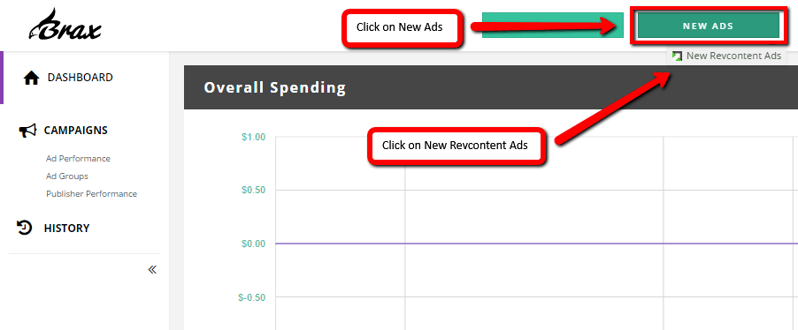
2. Fill out the Group Name, Destination URL, Tracking Code, Brand, and Content Type (Article, Mobile App, Video).
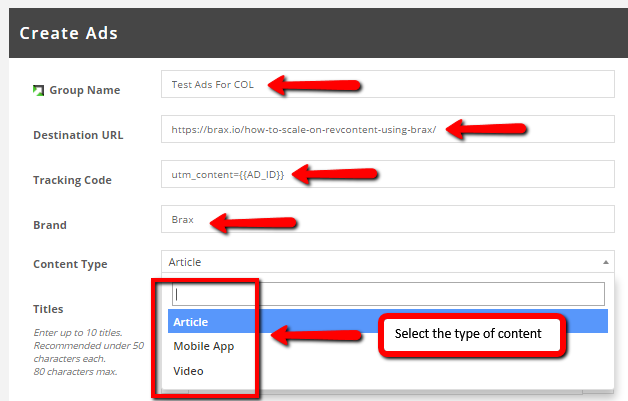
3. Then fill out the Titles and upload the images to use for the headlines. Remove any unwanted image/headline combinations then click Next button.
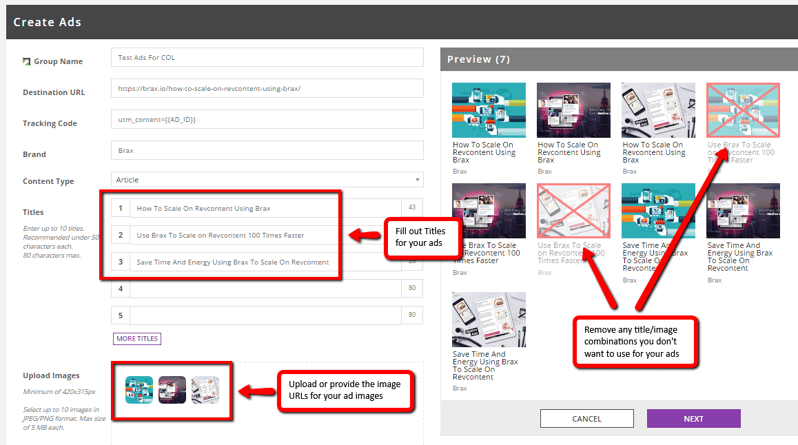
4. Then click on the Save button to save the Ad Group.
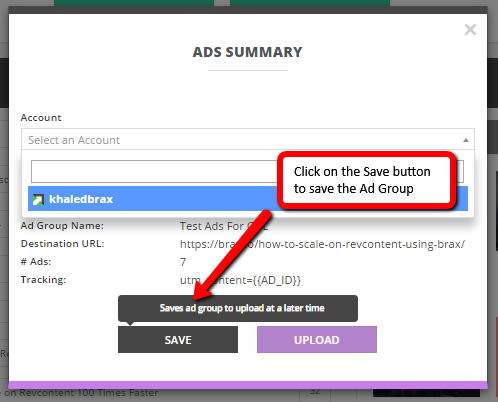
5. Once you have the Ad Group, you can use it multiple times to upload the same ads to each campaign instantly.
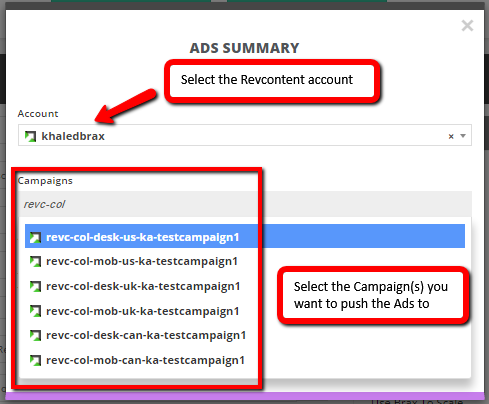
6. Select the account you created the campaign on and click on the Upload button.
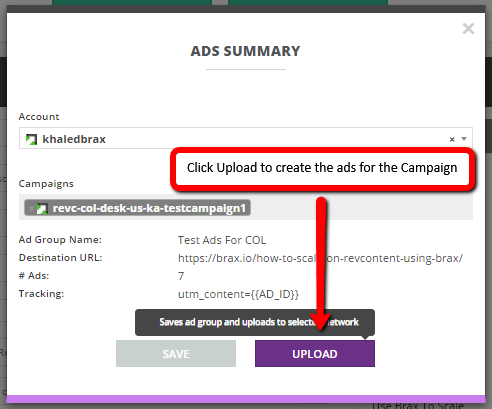
Optimizing Campaigns & Ad Creatives
After the ads have gone through their initial test impressions, the metrics should tell you what ads are working, and which ads should be paused. Go into the campaigns and pause low CTR/PPV ads or publishers where the ads aren't doing well. This will ensure you are utilizing impressions efficiently and are getting the highest quality traffic to your site.
Using Brax you can even look at the performance of all ads, pause underperforming ads and create more.
1. Click on the specific campaign to optimize ads.
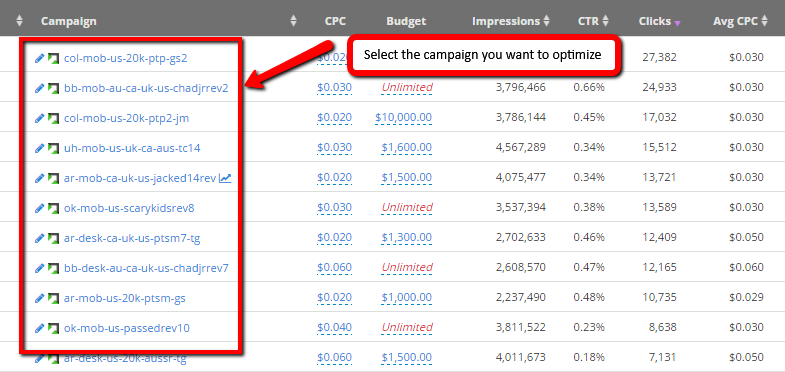
2. Sort ads based on CTR.
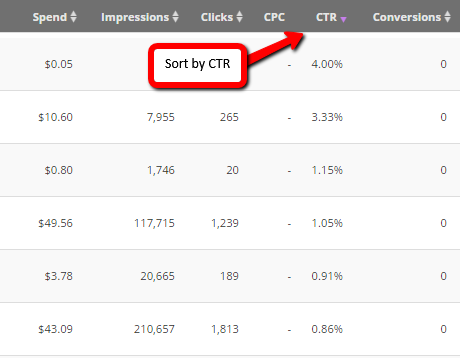
3. Click on the green play button to pause an underperforming ad.
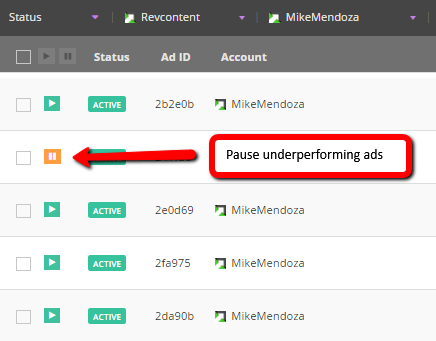
Create a new Ad Group with new titles/image combinations and push them to the campaign to retest. Make sure you're giving each ad enough time to get enough impressions. Don't prematurely pause an ad before it completes the test impressions to get its best CTR.
As you test and re-test ads, begin to see trends that work well on mobile vs. desktop, what types of images and headline combinations are working, and who to target based on topics, interests, or brands. It will be less guesswork and have the system for creating campaigns and ads to target the people and places with the highest ROI!
If you need further assistance on how to scale properly, whether with RevContent or other native ad platforms, we can help you! Just send as a message at love@brax.io and we'll be happy to assist.

